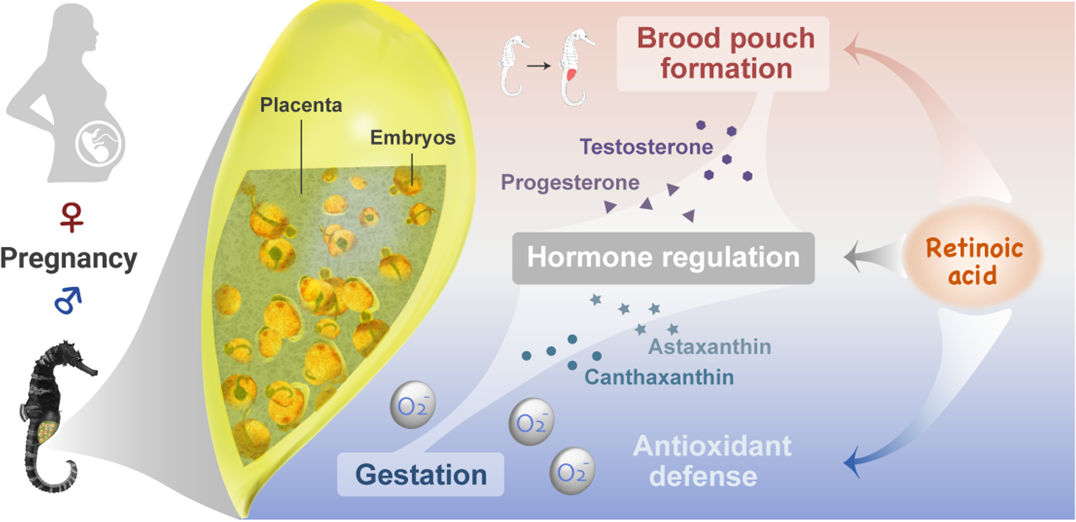
Seahorses have the unique characteristic of male pregnancy, which includes the carrying of many embryos in a brood pouch that incubates and nourishes the embryos, similar to the mammalian placenta. However, the regulatory networks underlying brood pouch formation and pregnancy remain largely unknown.
Recently, researchers led by Prof. LIN Qiang from the South China Sea Institute of Oceanology (SCSIO) of the Chinese Academy of Sciences found that retinoic acid (RA) synthesis and signaling pathway played essential roles in the formation of the brood pouch and pregnancy in seahorses. This work was published in The Innovation on Oct. 13.
Researchers from LIN's group have previously shown that seahorses had the highest evolutionary rate among the family Syngnathidae and syngnathid fishes shared convergent genomic changes with placental mammals.
In this study, they further focused on the specific structure of brood pouch in male seahorses and combined transcriptomic and metabolomic analyses to reveal the regulatory mechanism underlying pouch development.
RA might function upstream of testosterone and progesterone, thereby directly influencing brood pouch formation by regulating the expression of fshr and cyp7a1. Further, RA could influence tissue remodeling, organ development and immune defense by regulating target genes.
Additionally, the consistent decrease of RA and some antioxidant substances could regulate the antioxidant defense during pregnancy, which is essential for successful gestation in seahorses.

Regulatory role of retinoic acid in the brood pouch formation and pregnancy of male seahorses (Image by SCSIO)

86-10-68597521 (day)
86-10-68597289 (night)

52 Sanlihe Rd., Xicheng District,
Beijing, China (100864)

